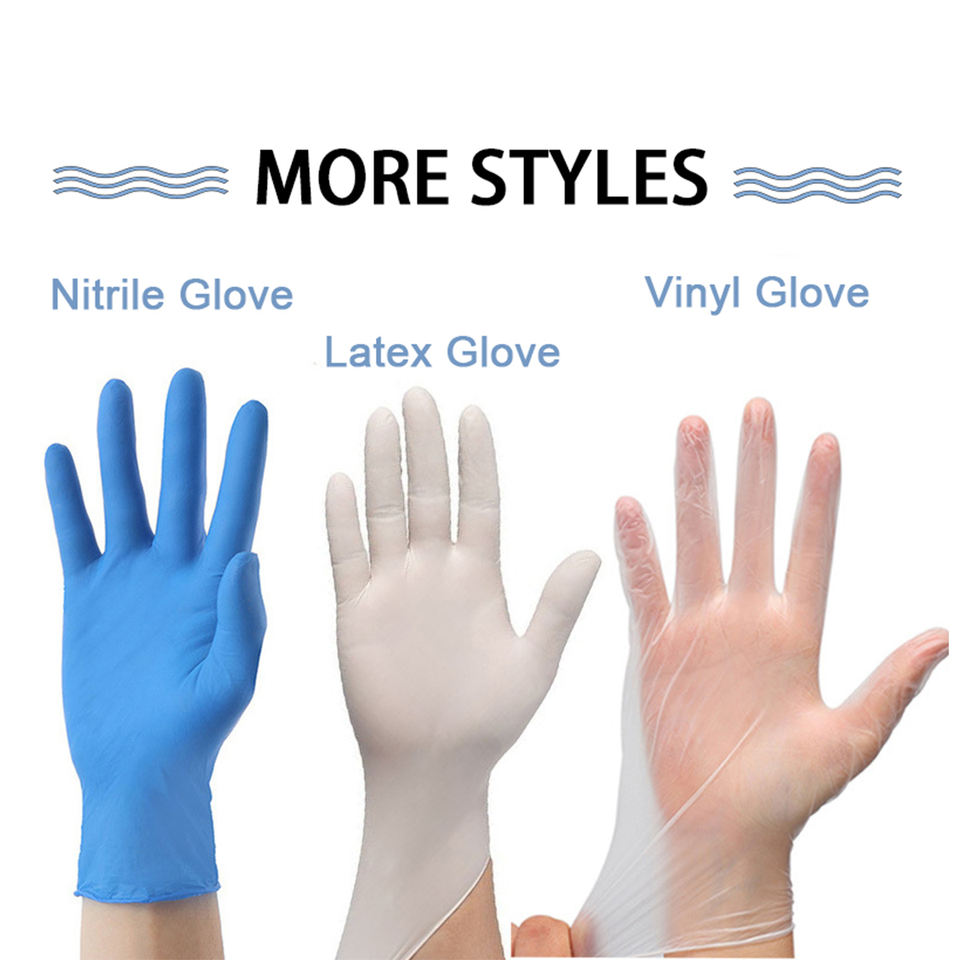A Comprehensive Guide to Choosing Disposable Gloves
Introduction:
Disposable gloves have become an essential part of our lives, serving a wide range of purposes across various industries and activities. With several types of gloves available, each with distinct features and benefits, choosing the right one can be a daunting task. This guide aims to provide a comprehensive overview of the different types of disposable gloves, their applications, thickness considerations, the difference between powdered and powder-free gloves, and the qualifications and testing reports necessary for international export.
- Differentiating Nitrile Gloves, Latex Gloves, and Vinyl Gloves:

a. Nitrile Gloves: Nitrile gloves are known for their exceptional durability and chemical resistance. They are a popular choice in medical and laboratory settings due to their hypoallergenic nature, making them suitable for individuals with latex allergies. Nitrile gloves offer a snug fit and maintain tactile sensitivity, making them ideal for precision tasks.
b. Latex Gloves: Latex gloves provide excellent flexibility and tactile sensitivity. They are often used in medical and food handling settings. However, some individuals may have latex allergies, which can cause adverse reactions. It's important to consider this factor when choosing latex gloves.
c. Vinyl Gloves: Vinyl gloves are cost-effective and provide basic protection for non-hazardous tasks. While they are less elastic compared to nitrile and latex gloves, they are comfortable for short-term use. Vinyl gloves are commonly used in food service and general cleaning applications.
2. Selecting Thickness and Weight for Different Applications:
The thickness of disposable gloves is measured in mils or millimeters. Thicker gloves generally offer more protection but can compromise tactile sensitivity. Consider the following guidelines for different applications:
- Delicate tasks requiring precision (e.g., medical procedures): Choose gloves with a thickness of 4-5 mils.
- General tasks in healthcare, cleaning, and food handling: Opt for gloves with a thickness of 3 mils.
- Basic tasks with minimal risk (e.g., food service): Use gloves with a thickness of 2 mils.
3. Powdered vs. Powder-Free Gloves:
Powdered Gloves: Powdered gloves are coated with a light dusting of cornstarch or other materials to make them easier to put on and remove. However, the powder can cause skin irritation or allergic reactions in some individuals. They are becoming less common due to health concerns.
Powder-Free Gloves: Powder-free gloves eliminate the risk of powder-related allergies and are suitable for use in various industries. They offer the same level of protection without the potential drawbacks of powdered gloves.
4. Qualifications and Testing Reports for International Export:
Exporting disposable gloves internationally requires adherence to specific regulations and standards. Necessary qualifications and testing reports include:
- ISO Certification: An ISO 9001 certification ensures consistent quality management systems.
- FDA Approval: Compliance with the U.S. Food and Drug Administration's standards is crucial, especially for medical-grade gloves.
- CE Marking: Essential for gloves sold within the European Economic Area, indicating conformity with health, safety, and environmental protection standards.
- ASTM Standards: American Society for Testing and Materials standards ensure product quality and safety.
- REACH Compliance: For gloves sold in the European Union, adherence to REACH regulations regarding chemical substances is essential.
Conclusion:
Choosing the right disposable gloves involves considering factors such as the type of glove, intended application, thickness, and powder preference. By understanding these aspects, you can make informed decisions to ensure optimal protection and performance. Additionally, meeting the necessary qualifications and testing requirements is vital for successful international export of disposable gloves. Always prioritize safety and quality to provide the best possible products to your customers.
 EN
EN
 AR
AR
 BG
BG
 HR
HR
 CS
CS
 DA
DA
 NL
NL
 FI
FI
 FR
FR
 DE
DE
 EL
EL
 HI
HI
 IT
IT
 JA
JA
 KO
KO
 NO
NO
 PL
PL
 PT
PT
 RO
RO
 RU
RU
 ES
ES
 SV
SV
 TL
TL
 IW
IW
 ID
ID
 LV
LV
 LT
LT
 SR
SR
 SK
SK
 VI
VI
 HU
HU
 TH
TH
 TR
TR
 FA
FA
 GA
GA
 CY
CY
 IS
IS
 LA
LA













